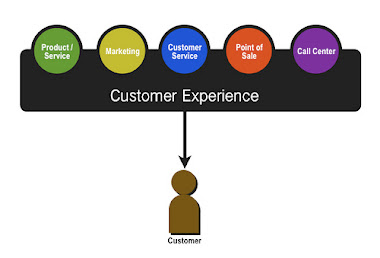Organizations that deliver great customer experiences start with a great customer experience culture. Culture is about a set of shared attitudes, values, and practices. When it comes to business, it’s about how those shared beliefs translate into the behaviours of the organization and its employees.
Culture is observable. Over the years, I’ve observed several qualities that great customer experience cultures possess. Here are the five most important characteristics of a great customer experience culture:
- Passion
- Communication
- Collaboration
- Pragmatic Thinking
- Empathy
Passion
Passion for customer experience is the fuel that powers customer centricity. Passion can be positively infectious. It can light a wildfire within a team. But it’s not just about cheerleading. It’s about determination and focus. There is a natural inclination to follow the path of least resistance. There is a natural inclination to be lazy. Passion is always championing doing the right thing for the customer and summoning the energy required to do it. Passion brings customer experience to life. When you hire new members to the customer experience team, hiring for passion should be near the top of the checklist. Ditto for the following characteristics.
Communication
You need to bring an entire organization along for the ride with you. Employees in organizations with immature customer experience practices may not understand why being customer focused is good for business. They may try to ignore your team and at worst, block your efforts to affect positive change. In mature customer experience organizations, everyone needs to stay connected to the vision and mission to understand where they fit into the big picture, what’s changing, and why. Communication is the key. And it’s pretty simple. Craft your message. Create a communication plan – who, what, when, and where. And then deliver that message. Then do it over and over again. Master the art of storytelling.
Collaboration
Most organizations won’t have the luxury of large team dedicated to planning, managing, and improving the customer experience. Most customer experience teams are small, often less than 5 people. That means relying on others to help bring the vision and strategy to life. Customer experience practitioners are adept collaborators. The politics of change are constant and stressful. Collaboration helps mitigate challenges introduced by change. Collaborating with others to achieve similar goals helps even more.
Pragmatic Thinking
Trade-offs are a way of life. There’s not enough money. There aren’t enough people to do the work. Not enough time. We can’t always get what want and sometimes, a proposed strategy isn’t as practical as theorized. Adjustments are required. Making huge jumps forward in the quality of customer experiences are great, but the journey for customer experience excellence is often completed just a few yards at a time. Stick to the plan, but don’t feel like making trade-offs means you’re losing or falling behind. Being realistic will help you move forward.
Empathy
Being customer centric means understanding your customers. Understanding your customers deeply means empathizing with them. To do so means putting yourself in their shoes. USAA is the most customer centered organization I know. They provide financial services to people in the American military as well as their families. The company was founded in 1922 by a group of former U.S. Army officers. Today, as part of the on-boarding experience, new USAA employees prepare and eat the same Meals, Ready to Eat (MRE) rations that service men and women are supplied with when deployed. Empathy is really the basis for all customer experience work and in my opinion, the most important of the five characteristics of a great customer experience culture

No comments:
Post a Comment